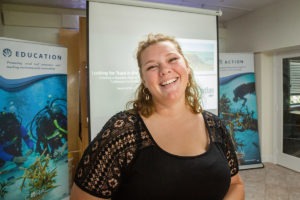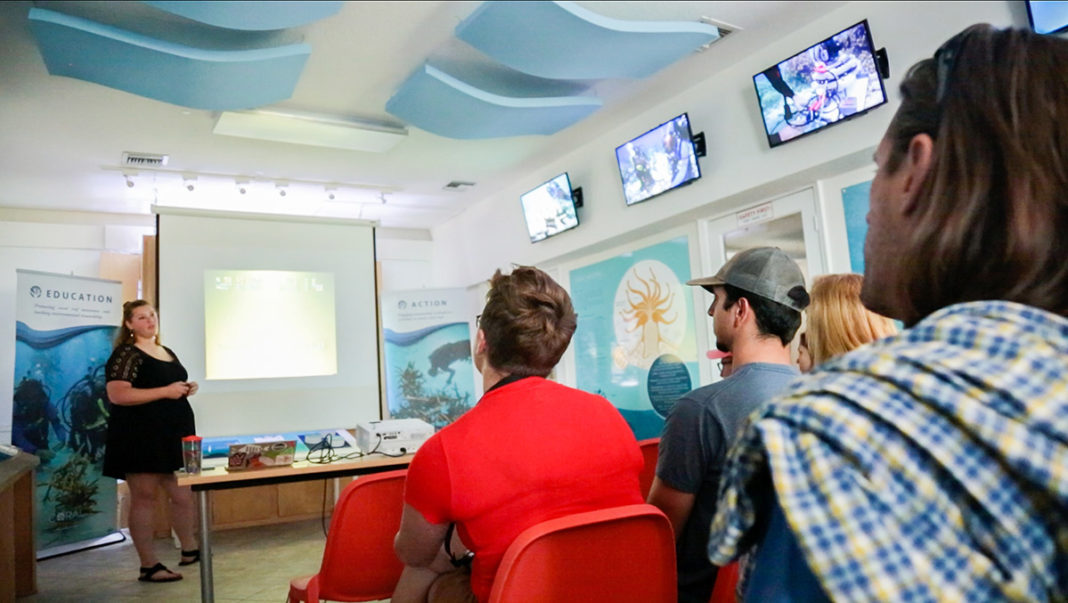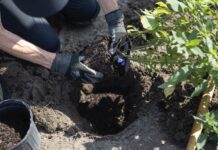“If you ever wanted to know, you definitely can get seasick sitting at a desk,” says Laura La Beur to her chuckling audience at Coral Restoration Foundation’s “Sips for Science” lecture. “Reviewing hours and hours of ROV (remotely operated vehicle) footage at my desk, all I saw was surge and motion, so that was really fun for me.”
La Beur received her master’s in marine systems and policy from the University of Edinburgh in Scotland, where she focused on deep-sea plastics using ROV, video-grab footage, and historical cruise reports from other research voyages. While her studies were geographically limited to the United Kingdom’s continental shelf — specifically on the Mingulay Reef Complex — La Beur’s research had the broader aim of creating an assessment strategy for monitoring marine litter in deep water corals and marine protected areas. She shared her findings and their real world applications for the local Florida Reef Tract.

“This topic is so important because we know it’s no different here,” said Islamorada councilwoman Cheryl Meads, who sits on the South Florida Water Management District Governing Board. After a pause, she added, “it might be worse.”
La Beur described how down welling currents in the Mingulay Reef Complex have historically contributed to the health of deep-water corals by bringing nutrients from the surface down. She also tells how “you can assume if anything else is on the surface like microplastics, it will also be brought down to the corals, making Mingulay a very interesting place to study marine debris and microplastics. In a similar way, the local ocean currents and freshwater discharges that flow out onto our local Florida coral reefs bring along with them runoff, agricultural nutrients and marine debris.
In studying various deep-water animals in Mingulay and their feeding strategies, La Beur discovered the corals were more susceptible to microparticles – marine debris that includes both microfibers and microplastics.
Microfibers are plastic filaments from clothing, which get washed through sewers and water treatment facilities before ending up in the oceans. Microplastics are plastic fragments that break down from larger pieces.
“As expected, suspension feeders and filter feeders had the highest ingestion of microplastics and microfibers,” said La Beur. To drive the point home, she showed a picture of a deep water bivalve with microfibers in its tissues.

La Beur’s analysis took a more policy-oriented approach when she quantified the amounts of the different plastics she found. “We have this catch-all word ‘plastics,’ but really they are all different,” says La Beur. “Interestingly, 90% of microparticles I found were microfibers,” says La Beur. “We can use Raman spectroscopy and other cool technology to identify the type of microfibers found, to identify the polymer of plastic.”
Calling for additional research, La Beur advocates for this precise study to figure out what is polluting our waters:
“There’s a specific polymer for fishing nets and a specific polymer for clothing, and once we know what’s the biggest culprit, we can start tailoring our policies to tackle the biggest sources of pollution getting into our waterways,” she said.
Julie Landau, of Islamorada, said society thinks it’s okay to use things once and throw them away. Whitney Wemett, a local conservationist, said, “It’s interesting: when you break down the sources of pollution, you can more effectively address and form policies. I never thought of it like that before.” Meads, nodding in agreement, added, “Precisely. Education is what calls people to action. We need talks like this, because they make you want to act.”





















